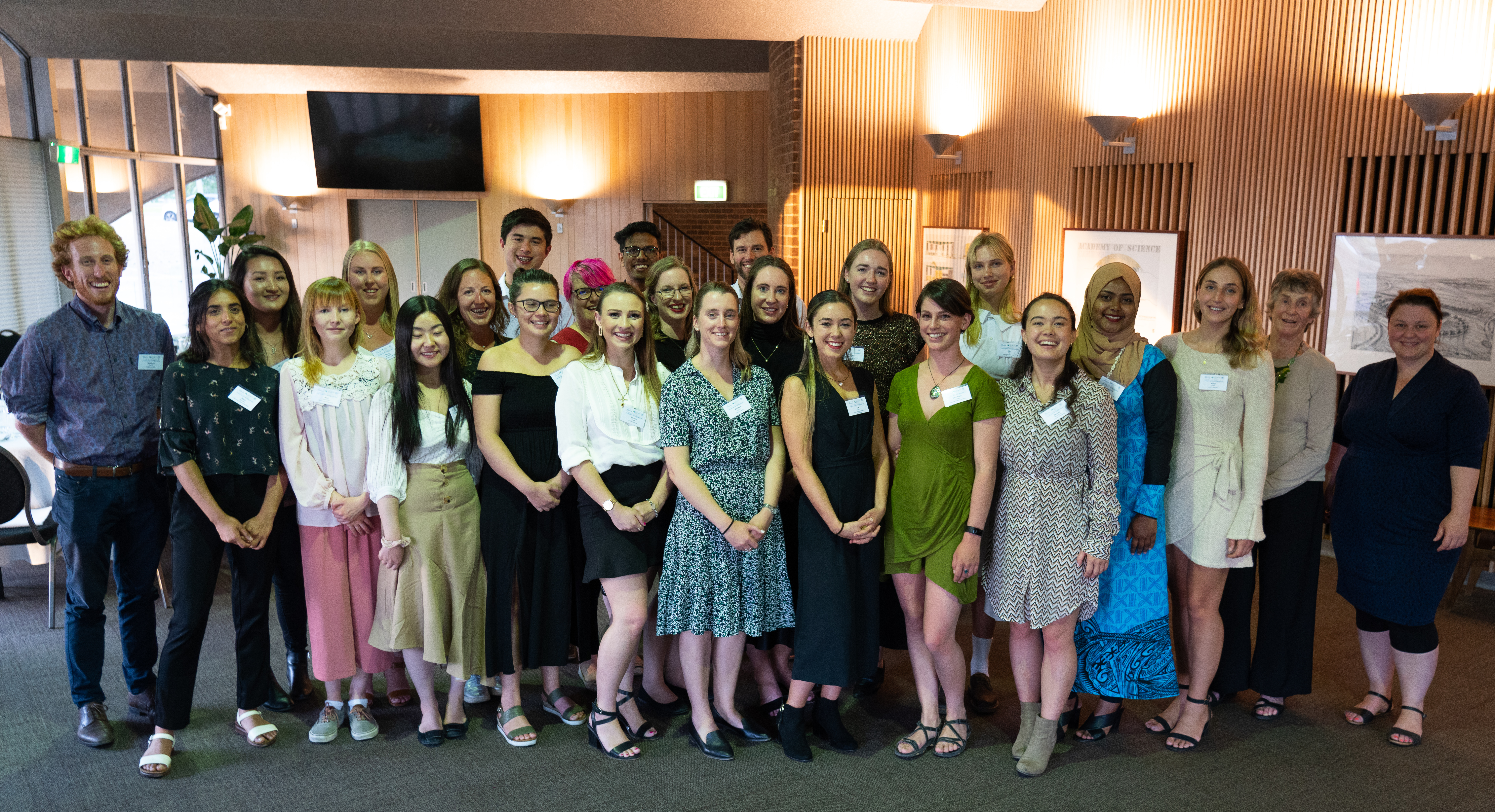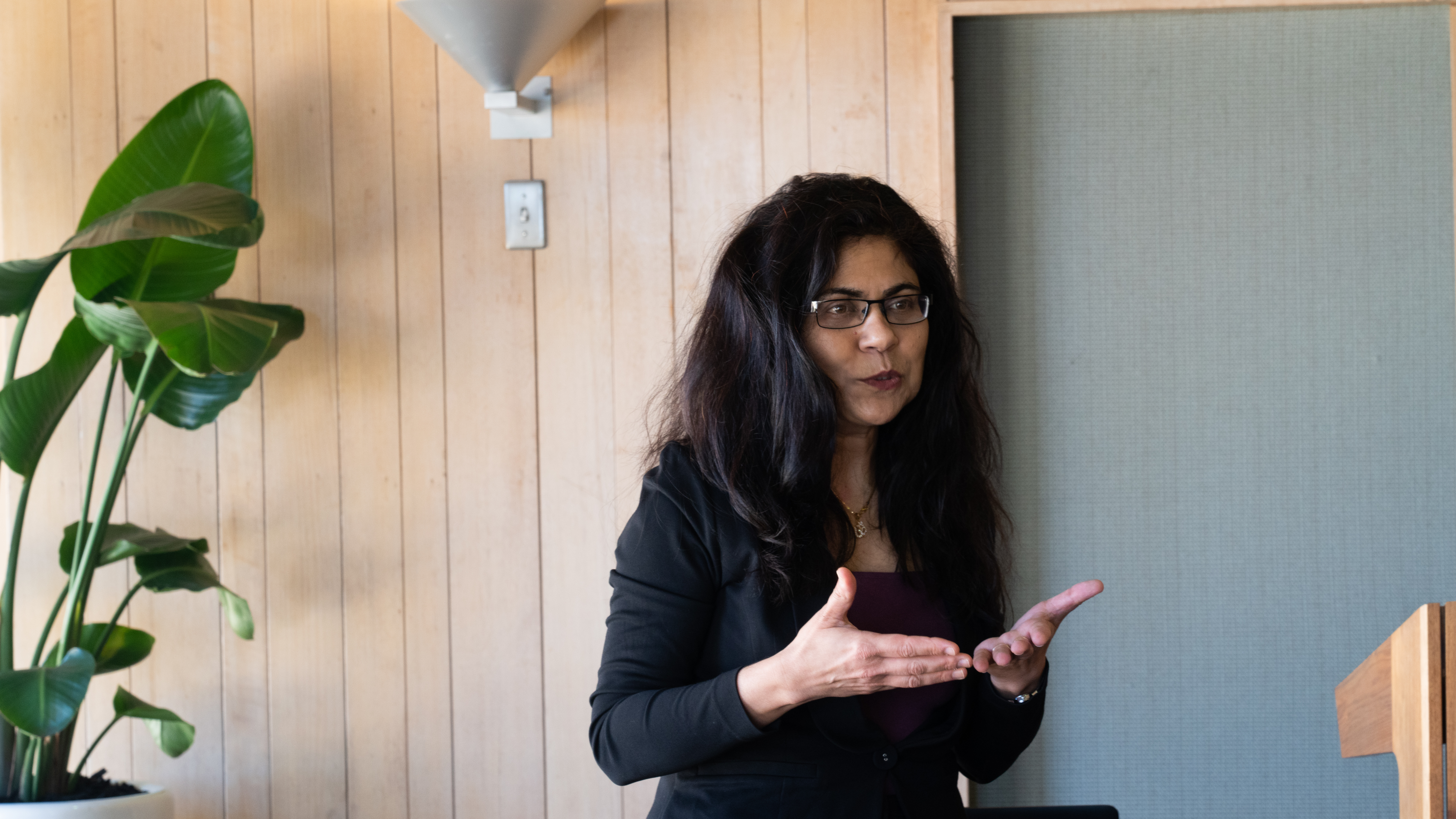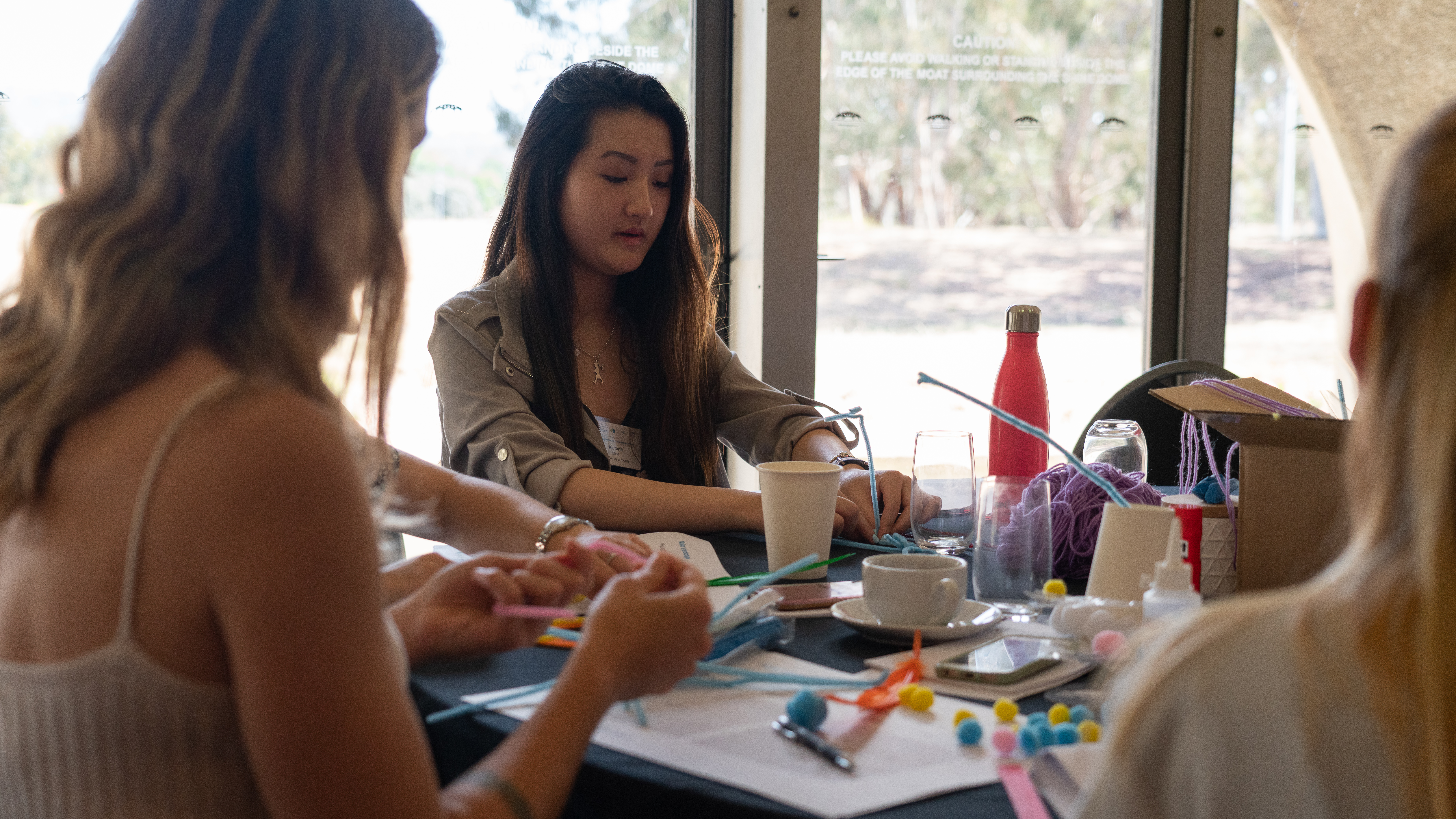Catalysing Change: Moving towards a circular economy
On 19-20 November, 20 honours year students from across Australia and the South Pacific gathered in Canberra for Catalysing Change: Moving towards a circular economy. This event was made possible thanks to the generous donation from the family of Ian McDougall. The focus of Catalyisng Change was to provide honours year students with a well-rounded introduction to the concept of the circular economy, and to demonstrate the effects of shifting to a circular economy across sectors.

The event began with an introductory dinner on the night of the 19th, followed by the main workshop and presentations on the 20th. Presentations were given by Professor Veena Sahajwalla FAA from the University of New South Wales, Dr Jennifer Yarnold from the University of Queensland, Kirilly Dickson from the ACT Commission for Environment and Sustainability, Anirban Ghose from the University of New South Wales, Dr Taylor Brydges from the Institute for Sustainable Futures at the University of Technology Sydney, and Mitchell Kardan from Visible Seas.
Professor Sahajwalla began the day by detailing the “secret weapon” in the war on waste: micro-factories. Traditional recycling often takes place at the "macro" scale, when materials like plastic are re-used to make other plastic items. But this method can fall short when products become damaged.
However, Professor Sahajwalla recognizes that damaged products can still be broken into their constituent parts and reused to make new products. In this way, she and her team at the University of New South Wales have been repurposing old textiles, paper, and glass to create floor and ceiling tiles. The "micro-factory" movement allows her to reuse items that would otherwise be thrown out. Later in the day, Anirban Ghose, an engineer in Professor Sahajwalla's lab, elaborated on his role working in the micro-factory and exploring new avenues in electronic waste recycling.

The second speaker, Dr Yarnold, focused on sustainable business models for a circular economy. Using microalgae biofuels as a case study, she described how her research at the University of Queensland investigated how to make microalgae-based fuels cost competitive. She stressed that closing the loop on a circular economy would require decoupling GDP from material and energy use. Policy support from the government would help to ease this transition.
Following the morning break, Kirilly Dickson from the ACT Commission for Environment and Sustainability outlined the potential for a circular economy in Canberra. A recent paper she authored, Circular #CBR, focused on three key case studies: C for coffee, B for beer, and R for riding, to illustrate opportunities for the nation's capital to transition towards a more circular economy.
Dr. Brydges from the Institute for Sustainable Futures at UTS spoke about the sustainability issues that are facing the fashion industry, particularly the "fast fashion" movement. This trend in fashion is for clothing companies to quickly and cheaply produce off-the-runway clothing items, which are quickly discarded as trends change over seasons and years. This results in huge amounts of clothing waste, as well as burning huge amounts of greenhouse gases to produce the clothes. However, the fashion industry is aware of the problem, and moving towards circular economy practices such as free repair services and in-store recycling programs.
Following the lunch break, Mitchell Kardan from Visible Seas ran a workshop on creative and design thinking to show the students how their work connects to the circular economy. Students shared their research with partners, first quickly and then in a more in-depth, interview-style conversation designed to draw out the emotions and ideas that accompanied their research. Then pairs of students brainstormed how their ideas might scale up if, for instance, they were given $20 or $1 billion to implement their ideas. Finally, students used art and craft supplies to make physical their ideas and concepts, spurring a range of creative and artistic interpretations of their projects.

Together, the speeches and workshop equipped students with a strong conceptual understanding of the circular economy, as well as real-world examples of circular economy concepts in action.
To learn more about the circular economy, see our explainer document, Circular Economy: Redesigning the Future.